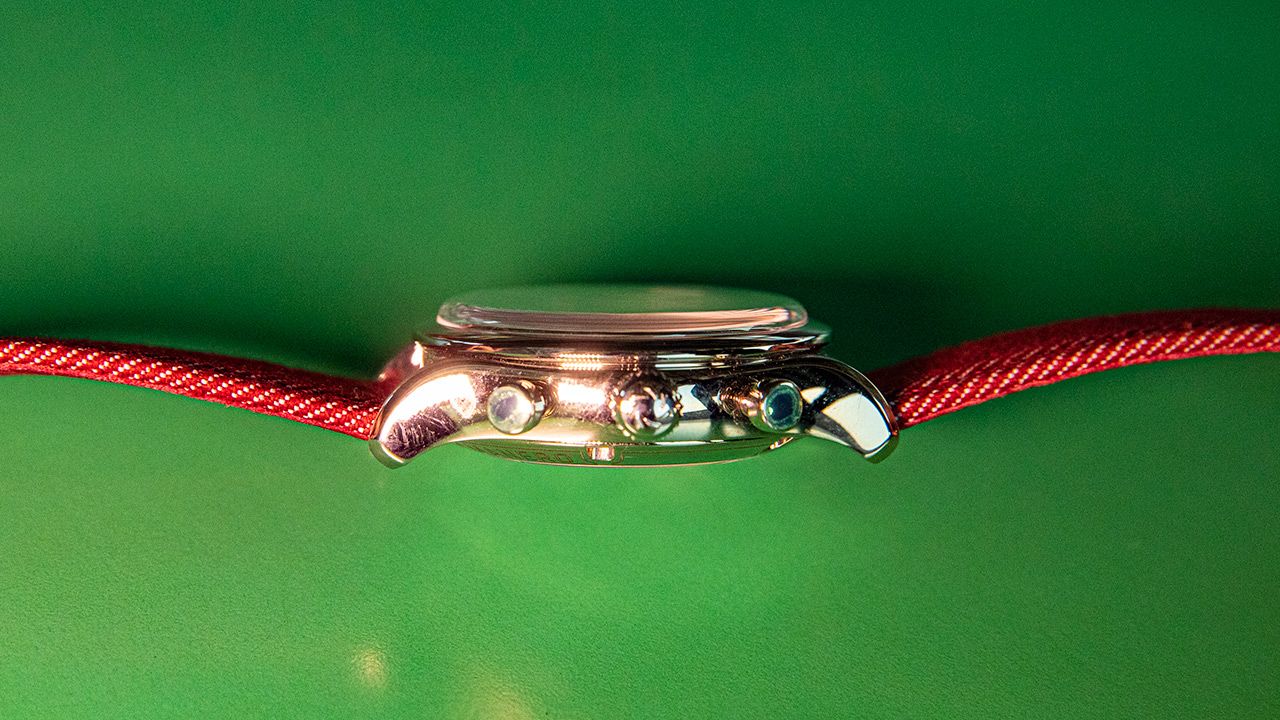The history of how the Chronograph got popular after the second world war
With the 40mm version of its Manero Chronograph, Carl F. Bucherer takes us back into design history, and produces a classical chronograph, but with a smattering of modern touches to make it relevant to today’s world.

In the ultra-competitive world of chronographs, competition is intense. And, if you’re planning to launch a variation of an already successful model lineup in your collection, why not go back to history? Carl F. Bucherer certainly seems to think so, and we test their latest offering to find out.
In the world of fine watchmaking, chronographs are some of the most popular offerings that virtually any brand offers. The history of how the Chronograph got popular goes back to motor racing and other sporting activities after the second world war – when digital timers didn’t exist – and wearing a chronograph meant you could easily use it to time things accurately to a fraction of a second, and it needed no other specialized equipment other than just a wristwatch, and the knowledge to use it. For a lot of important professions – such as pilots and racecar drivers – it was also a useful tool in their daily life.
Classic design
When Carl F. Bucherer decided to build a smaller version of their Manero Flyback Chronograph – the variant I tested measures 40mm, as opposed to the larger 43mm variant – they made the smart choice of sticking to the classic Bi-compax chronograph look with two panda sub-dials and large pump pushers. If you’ve seen classic chronographs before, you’ll instantly recognize this one. On the construction and finishing side of things, I have to say, the Manero measures really well. The case features a combination of brushed and polished finishes to it, and the sunburst dial looks great. While the dial features a lot of elements – such as the red sub-dials – it is very well designed and doesn’t look busy at all. Right from the tachymeter scale running around the dial, to the dauphine hands and the lovely, beveled date window, the dial is clean, extremely legible and the colour contrast between the silver and red (I would say it’s more a maroon than a red) gives it a unique character. In addition, you also get an exhibition case back that does a decent job of showing you the CFB 1973 movement, but I would have a liked a bit more viewing room at the rear to admire the movement in detail.
Performance
In the short while that I had the Manero 40, the watch kept time extremely well, and the controls – the pushers and the crown – were very easy to use. In fact, I loved the response of the pushers when pressed – they provided a lovely tactile feel and it was easy to distinguish when they were engaged. Similarly, the flyback function worked perfectly and was flawless.
On the wrist

Being the owner of multiple watches – including a chrono or two – I have to say that the Manero 40 wears very well on the wrist. The 40mm case really helps, and while many of you might think that its 14.45mm thickness might be a hindrance, but it’s not. With its flexible fabric strap, light weight and lovely balance, it almost sits on your wrist invisibly. This is even more pronounced when, like me, you wear a massive Tudor GMT as your daily watch. I would have to say except when I was using my laptop to type long articles – when I don’t want my wristwatch scratching against my Mac’s metal surface – I almost never realized I had the Manero on my wrist.
In a nutshell then, the Manero 40 is a terrific size, feels high-quality and features a movement you can trust, with a unique design featuring its two-tone dial and cloth strap. The only thing that bothered me was that for a chrono (admittedly with a flyback and date function) the Manero seems priced at a premium at `6.43 lakh. And that would largely be my main bother with the Manero. However, if you can strike a deal with your retailer for a better price, the Manero would make for a terrific everyday chrono that looks great and yet flies under the radar and does it job very well.
Also Read:
The winners of the Grand Prix d'Horlogerie de Genève (GPHG) awards
Reinventing Legendary Timepieces


Write your Comment on